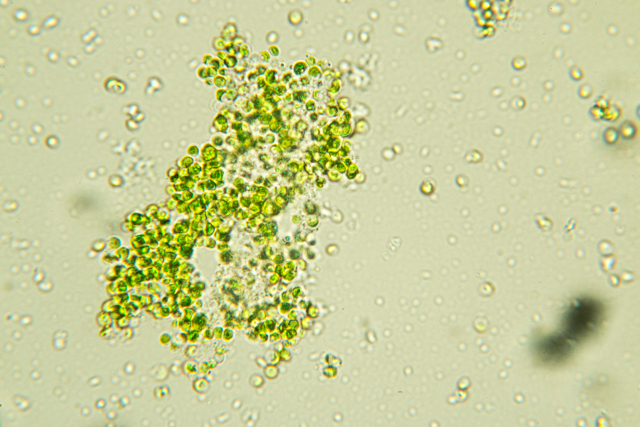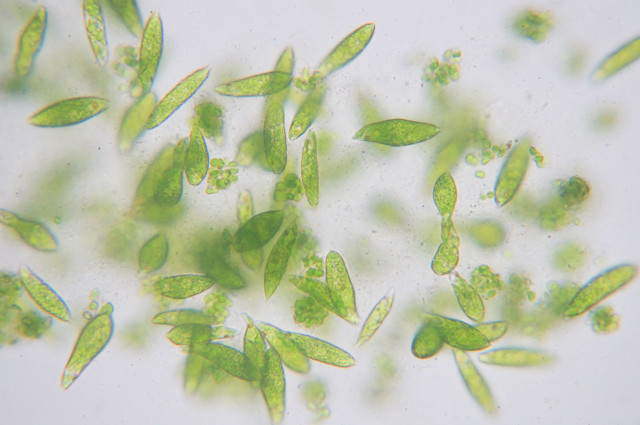Frequently asked questions & inquiries
Please check the list of frequently asked questions before sending an inquiry.
- Supplement products
- Powder products
- Extract products
- All product types
customers
customers
with Spirulina
Individual customers
- When should I take it during the day?
- You can take it anytime you would like to, but we recommend having it as a side dish when eating a meal and taking it with a glass of green tea or water (cold or warm).
- How long should I continue taking it?
- For first-time users, we recommend trying it out by taking it every day for three months.
- Are there any medicines it shouldn’t be used with?
- Spirulina contains vitamin K, which may weaken the effects of anticoagulants such as warfarin. People who have received nutritional advice from a healthcare professional to avoid food high in vitamin K (such as natto, green juice and chlorella) should not consume Spirulina products.
- Does it ever cause a bad reaction?
- As is the case with other foods, in very rare cases eating Spirulina as a food may cause the body to react badly. In rare cases, the protein or other components of Spirulina may cause symptoms such as skin itching, rashes, stomach discomfort or diarrhea. If you feel odd after taking Spirulina, stop taking it and let us know by sending in an inquiry.
- How much nutrition does Spirulina provide compared to vegetables?
-
Four grams of Spirulina contains as much beta-carotene as a day’s worth or 120g of green and yellow vegetables. See the table below for more details.
Comparison between Spirulina and vegetables
characteristics Spirulina 4g ※1 Green and Yellow Vegetable 120g ※2 Light-colored Vegetable 230g ※2 Protein 2.5g 2.3g 2.1g Dietary fiber 0.2g 3.1g 3.5g Calcium 12mg 72mg 62mg Iron 3.6mg 1.3mg 0.7mg β-Carotene 7,000μg 3,444μg 225μg VitaminB1 0.12mg 0.11mg 0.09mg VitaminB2 0.16mg 0.14mg 0.07mg *1: Calculated based on dried Spirulina powder
*2 Average value of eight representative vegetables (from the 2020 edition (8th revised edition) of the Standard Tables of Food Composition in Japan, revised in 2023)
The recommended daily vegetable intake is 350g, of which 120g of green and yellow vegetables and 230g of light-coloured vegetables are recommended. - Is it okay for children and pregnant women (or women planning to fall pregnant) to take Spirulina?
- Children who are able to swallow Spirulina tablets without difficulty may take Spirulina products. There are no particular rules about what amount should be taken because this is a food product, but generally we recommend that children take the same number of tablets as their age in years (i.e. around six tablets a day for a six-year-old child). Our products are also taken regularly by women who are planning to have a baby, pregnant or breastfeeding.
- Are there any differences between DIC Spirulina and other brands?
- If you think about rice, the place of origin and variety of rice makes a difference to the taste, content and other aspects of the rice. Products that use DIC Spirulina contain high concentrations of health-related components that can otherwise easily be broken down or lost during production, such as beta-carotene, phycocyanin and zeaxanthin. Also, there are concerns about the heavy-metal content (cadmium, lead and mercury) of cheaply priced similar products available.
- How much Spirulina powder should I use per day?
- There are no special rules because this is a food product, so you can start from a small amount sprinkled over your meals and then adjust the quantity to your liking. Four grams of Spirulina powder provides the same amount of beta-carotene as a day’s worth or 120g of green and yellow vegetables. Take a look at the suggested recipes with Spirulina that we have put on Cookpad.
- What type of person are Spirulina extract drinks recommended for?
- These are health drinks with a high content of the polysaccharides contained in Spirulina. We particularly recommend these drinks for people who are getting nutrition in their diet but want to be even healthier and stay active and energetic for longer.
- Can I take it even if it has passed its best before date?
- Please take within the best before date.
- What condition can Spirulina be used for?
It doesn’t say on the package, so I would like to know specifically. - There is a law in Japan known as the Pharmaceuticals and Medical Devices Act (PMD Act) that prohibits writing the effects of food on product packaging, leaflets or elsewhere as is done for medicine. This is why we have consistently complied with the laws and regulations for over 40 years since first launching our products by not printing such claims. We hear pleasing feedback from a great number of people who have been using Spirulina for many years and feel healthy.
- Can I contact you by phone?
-
Please use the ” Contact Us” form.
We apologize for the inconvenience and appreciate your understanding.
- If the intended use of the Spirulina powder is to prevent color fading or to fortify nutrition should the way it is labelled be changed?
- Whether Spirulina is being used to prevent color fading or to fortify nutrition it is still treated as a food product and therefore should still be listed as “Spirulina”. Different requirements may apply for usage outside of Japan, so please inquire in such cases.
- Can Spirulina powder be used for animal feed and pet food?
- Spirulina is often used to enrich the colors of ornamental carp and goldfish, and recently it is being used in pet food as well. Please send us an inquiry if you would like more details.
- Do you sell organic Spirulina powder?
- The Ministry of Agriculture, Forestry and Fisheries in Japan describes organic as agriculture where soil productivity is improved by using manure or similar means and where there is, in principle, no use of chemically synthesized fertilizers or pesticides. It is generally held that this definition of organic doesn’t apply to plants like Spirulina or wasabi that grow in water rather than in soil. We recommend that people looking for organic products pay due caution to the merits of such certification.
- Will the color disappear when heated?
- Because LINABLUE® is a plant-derived colorant it has low resistance to heat and may fade in some cases after being heated. However, there are cases where an attractive color can be retained depending on when LINABLUE® is mixed in and what it is mixed with, so we recommend trying it out first.
- When should I mix it in so that the color doesn’t fade?
- While the right timing depends on the circumstances, in the case of jelly apparently relatively good color retention can be achieved if LINABLUE® is mixed in after the jelly solution has been cooled to below 60℃.
- How much powder should I use?
- We recommend using an amount equivalent to 0.05% to 0.1% of the weight of the other ingredients (including water).
For example, with 5g of LINABLUE®G1 you can make:
・around 200 to 250 soda flavor icy poles (100ml each)
・around 400 blue cocktails (50ml each) - What is the minimum purchase unit in kilograms for commercial products?
- Please check the “Packaging unit” column for each product in the list of Professional Use products .
- I would like detailed written information / a quote / product samples.
- Please send your request via the inquiry form below. A member of our sales team will contact you.
- Can I contact you by phone?
- Please use the ” Contact Us” form. We apologize for the inconvenience and appreciate your understanding.
Corporate customers
Spirulina powder
LINABLUE®
All products
Comparison with Spirulina
- What are the differences between Spirulina, chlorella and euglena?
-
Spirulina

It predominantly grew naturally and abundantly in African and Mexican salt water lakes. Later, the natives in the area harvested them, and started using Spirulina as a source of protein in their daily diet. Spirulina, the micro-algae, has caught attention for its excellent source and balance of protein, vitamins, and minerals, and is said to be the “King of Superfoods”.Some of Spirulina’s specific nutritional components include phycocyanin, gamma-linoleic acid, and polysaccharide. Out of these, carotenoids are gaining attention for not only including beta-carotene, but also a high concentration of zeaxanthin, which has an antioxidative component. The trend in products is Spirulina 100%.
Chlorella

Chlorella, green algae, appeared on earth approximately two billion years ago.Similar to Spirulina and Euglena, it can photosynthesize. Since it is high in protein, Chlorella was popular as food source following World War II, and many countries around the world began to research on the cultivation of Chlorella. Chlorella’s specific nutritional components include polysaccharide CFG and chlorophyll. Like Spirulina, product trends are 100% Chlorella.
Euglena gracilis

Euglena gracillis, classified as a protozoan organism and an alga, appeared on earth approximately 500 million years ago.Generally known as “Euglena”, it has been researched for use for various purposes, such as, food, beauty products, feed crop, and bio fuel. It has excellent balance of nutrients, and has gained demand as dietary supplement like Spirulina. Euglena’s specific nutritional components include polysaccharide paramylon, EPA, and DHA. Since there are no Euglena 100% type products, most are combined with other components in a capsule.
- How much nutrition does Spirulina provide compared to vegetables?
-
Four grams of Spirulina contains as much beta-carotene as a day’s worth or 120g of green and yellow vegetables. See the table below for more details.
Comparison between Spirulina and vegetables
characteristics Spirulina 4g ※1 Green and Yellow Vegetable 120g ※2 Light-colored Vegetable 230g ※2 Protein 2.5g 2.3g 2.1g Dietary fiber 0.2g 3.1g 3.5g Calcium 12mg 72mg 62mg Iron 3.6mg 1.3mg 0.7mg β-Carotene 7,000μg 3,444μg 225μg VitaminB1 0.12mg 0.11mg 0.09mg VitaminB2 0.16mg 0.14mg 0.07mg *1: Calculated based on dried Spirulina powder
*2 Average value of eight representative vegetables (from the 2020 edition (8th revised edition) of the Standard Tables of Food Composition in Japan, revised in 2023)
The recommended daily vegetable intake is 350g, of which 120g of green and yellow vegetables and 230g of light-coloured vegetables are recommended. - How are Spirulina and chlorella different?
-
Comparison of Spirulina and chlorella
Information Spirulina Chlorella History First appearance Around 3 billion years ago Around 2 billion years ago Discovery (discoverer’s nationality) 1927 (German) 1890 (Dutch) Start of research, major presentations 1967 (international academic society)
1974 (UN)1917 (Germany)・
1942 (other countries)Start of mass-production 1978 in Japan (DIC) 1964 in Japan Classification Algae Blue-green algae Green algae Shape 
(unicellular)
(unicellular)Size 0.5mm (500μm) long 0.005mm (5μm) in diameter Efficiency / Other Cell wall Thin Thick Digestive absorption rate 95% ※ 60〜82% Color of stool Same as after eating vegetables Tendency to produce green stools Properties of tablet Sticks to teeth easily Doesn’t stick to teeth Taste Like seaweed Like powdered green tea Growing environment Temperature Hot Moderate Culture medium Highly alkaline Mildly acidic Sample content of 100g Carotene 80〜270mg 5〜75mg Potassium 1300〜2000mg 700〜1400mg Chlorophyll 900〜1600mg
(type A)1500〜4000mg
(type A + type B)Phycocyanin 3.5〜10g 0 *Based on Spirulina protein feed/excretion tests performed on rats
- Can I contact you by phone?
- Please use the ” Contact Us” form. We apologize for the inconvenience and appreciate your understanding.
Inquiry form
We accept consultations and inquiries from corporate customers here.
For corporate customersFor other inquiries, please contact us here.
Other inquiries


 Product Search
Product Search Request Documents
Request Documents
 Online store
Online store